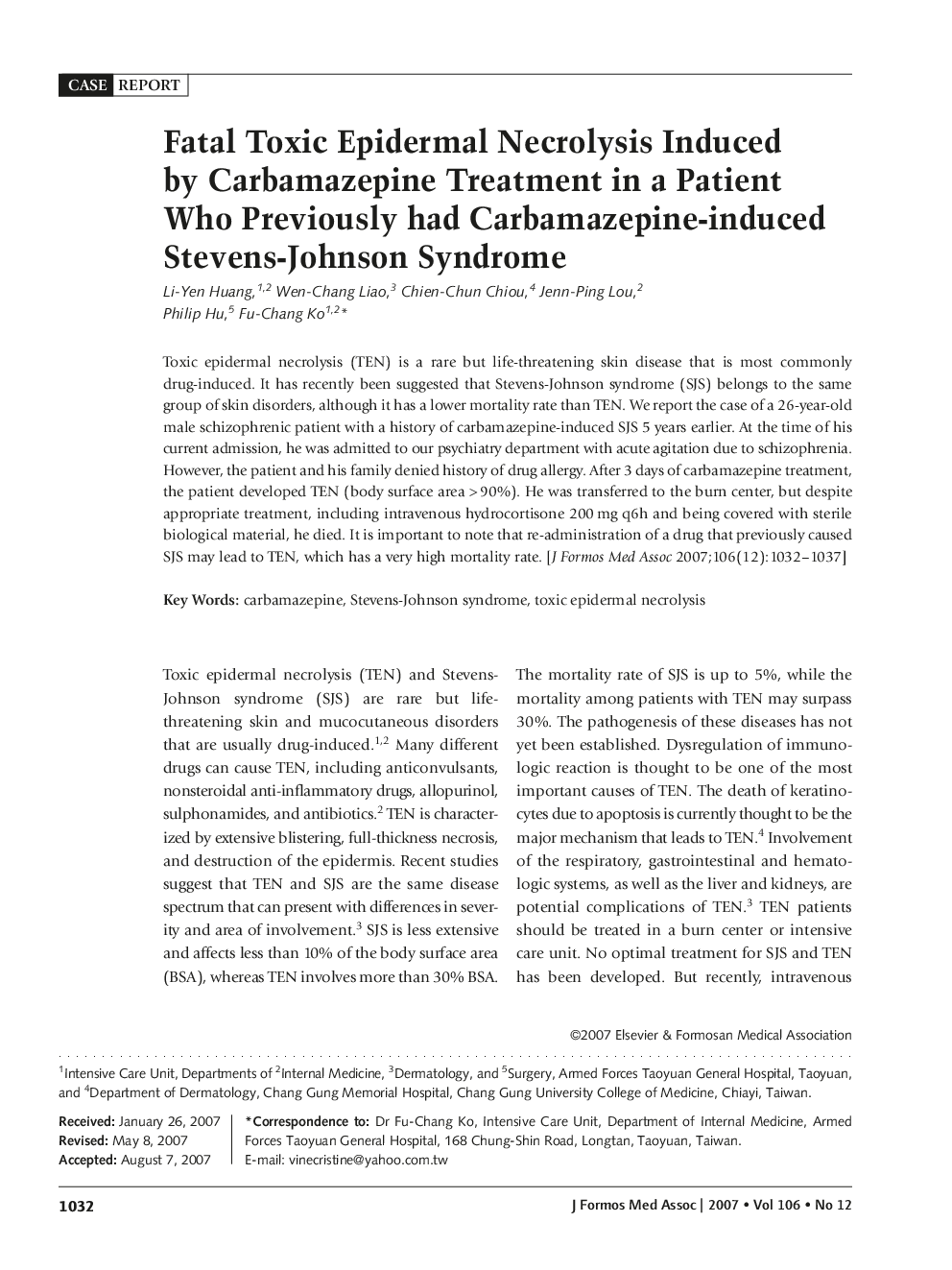| Article ID | Journal | Published Year | Pages | File Type |
|---|---|---|---|---|
| 3480568 | Journal of the Formosan Medical Association | 2007 | 6 Pages |
Toxic epidermal necrolysis (TEN) is a rare but life-threatening skin disease that is most commonly drug-induced. It has recently been suggested that Stevens-Johnson syndrome (SJS) belongs to the same group of skin disorders, although it has a lower mortality rate than TEN. We report the case of a 26-year-old male schizophrenic patient with a history of carbamazepine-induced SJS 5 years earlier. At the time of his current admission, he was admitted to our psychiatry department with acute agitation due to schizophrenia. However, the patient and his family denied history of drug allergy. After 3 days of carbamazepine treatment, the patient developed TEN (body surface area > 90%). He was transferred to the burn center, but despite appropriate treatment, including intravenous hydrocortisone 200 mg q6h and being covered with sterile biological material, he died. It is important to note that re-administration of a drug that previously caused SJS may lead to TEN, which has a very high mortality rate.
